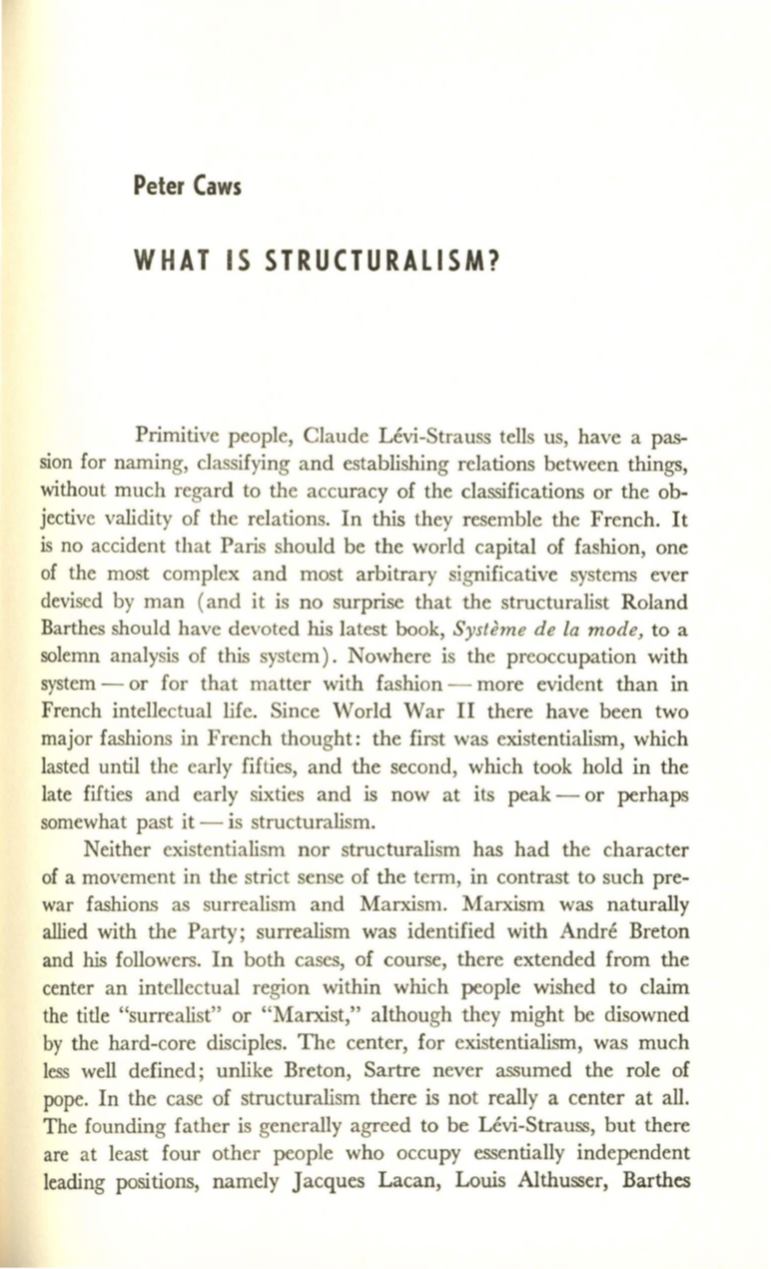
Peter Caws
WHAT IS STRUCTURALISM?
Primitive people, Claude Levi-Strauss tells us, have a pas–
sion for naming, classifying and establishing relations between things,
without much regard to the accuracy of the classifications or the ob–
jective validity of the relations. In this they resemble the French. It
is
no accident that Paris should be the world capital of fashion, one
of the most complex and most arbitrary significative systems ever
devised by man (and it is no surprise that the structuralist Roland
Barthes should have devoted his latest book,
Systeme de La mode,
to a
solemn analysis of this system). Nowhere is the preoccupation with
system - or for that matter with fashion - more evident than in
French intellectual life. Since World War II there have been two
major fashions in French thought: the first was existentialism, which
lasted until the early fifties, and the second, which took hold in the
late fifties and early sixties and is now at its peak - or perhaps
somewhat past it - is structuralism.
Neither existentialism nor structuralism has had the character
of a movement in the strict sense of the term, in contrast to such pre–
war fashions as surrealism and Marxism. Marxism was naturally
allied with the Party; surrealism was identified with Andre Breton
and
his
followers. In both cases, of course, there extended from the
center an intellectual region within which people wished to claim
the title "surrealist" or "Marxist," although they might be disowned
by the hard-core disciples. The center, for existentialism, was much
less well defined; unlike Breton, Sartre never assumed the role of
pope. In the case of structuralism there is not really a center at all.
The founding father is generally agreed to be Levi-Strauss, but there
are at least four other people who occupy essentially independent
leading positions, namely Jacques Lacan, Louis Althusser, Barthes


